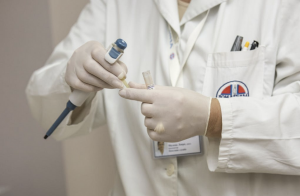Pharmacy Audits are on the Rise
A Comprehensive Pharmacy Audit Solution Ensures 24/7 Readiness
A few years ago, the Michigan Pharmacists Association hosted a webinar on the topic of “pharmacy audits,” during which former state attorney general John Wright advised pharmacists that “because of technology, technically, you are always being audited.”
Wright went on to explain: “Pharmacy Auditors have automated systems to look at your processes and what is happening in pharmacies, and are always looking at data for clues they can use to trigger pharmacy audits, so really you are always being audited.”
This bleak assessment would seem to be supported by reports from different pharmacists about the frequency and scope of audits their pharmacies have experienced in recent times.
A popular blog written by an Iowa pharmacy owner, for example, detailed the author’s pharmacy audit experiences.
“Over my career as a pharmacy owner, we have faced over $1,000,000 worth of pharmacy audited claims, and the PBMs have attempted to charge back over 10% of that amount,” the author wrote. “A single pharmacy audit may include over 100 individual prescriptions representing as many as 250 dispense dates and may represent over $100,000 in sales.”
This particular pharmacist went on to note his near-100 percent success rate in defending his pharmacies from unfair charge-backs – a process that required a considerable investment of time and energy.
Similar examples were reported by Health Mart, which cited one Pennsylvania pharmacy owner whose three stores were audited “about 30 times” in a single year. Another owner of five pharmacies in Ohio said his staff typically handles three-to-five pharmacy audits at any given time.
It would certainly seem then, that pharmacy audits have become an inevitable part of today’s pharmacy operations. For a pharmacy that has not yet been subject to a pharmacy audit, the question is not “if” an audit is in its future, but “when” will it occur?
Stay focused on the underlying purpose of a pharmacy audit.
As a pharmacy owner considers the potential implications of a pharmacy audit, it’s important to stay focused on the underlying purpose of a pharmacy audit: Parties paying for services want to make sure they are not paying too much, and that organizations with which they engage are acting in good faith, and in full compliance with all regulatory requirements.
That said, it’s critical for a pharmacy owner to have a good understanding of current pharmacy audit practices, and information about how to proactively prepare for an audit. That preparation begins with meticulous documentation and record-keeping as a way to minimize the disruption and adverse consequences of a pharmacy audit. A comprehensive pharmacy software solution can provide a high degree of confidence that all records are in order, but a pharmacy owner must have an appreciation for the “bigger picture” of today’s pharmacy audit practices.

For starters, a pharmacy manager must realize that pharmacy audits can come at any time, and in many forms.
In general, pharmacy audits are usually initiated by a party which may include:
- Pharmacy Benefit Managers. (Caremark, Express Scripts, OptumRx, etc.)
- Private insurance companies. In many instances, pharmacy audits are outsourced to external audit companies that operate on a “bounty” basis whereby the auditor is paid a percentage of monies recovered in the pharmacy audit. Thus, these companies have a financial incentive to uncover wrongdoing.
- Government Agencies (Medicaid/Medicare or, if fraud is suspected, the Drug Enforcement Agency).
Regardless of which party initiates the pharmacy audit, the goal is generally the same – to uncover wrongdoing and recover funds believed to have been erroneously paid to the pharmacy.
Many Different Types of Pharmacy Audits
According to the American Pharmacy Cooperative, Inc. (ACPI), common types of pharmacy audits include:
- Desk/mail audits. An auditor will contact a pharmacy by automated means and request specific pharmacy claims and/or additional information. The pharmacy will accumulate the requested information and send the documents to the auditor. According to ACPI, the desk audit is “set up to evaluate prescribing patterns, physician referral patterns, utilization overrides, ingredient cost integrity, geographic prescription reports, payment reports, and billing issues to identify possible abusive or fraudulent activity.”
- Telephone pharmacy audit. The pharmacy receives a phone call from an auditor and is asked to clarify information included on a single claim, or a small number of claims.
- Prescriber audits. Claims provided by a pharmacy are “thoroughly verified” by a prescriber/physician to ensure all parties records coincide. The prescriber audit is essentially handled the same way as a desk audit.
- Member audits. Claims provided by a pharmacy are validated by specific patients/members. This type of audit is also handled in the same manner as desk audits.
- On-site/Field pharmacy audits. As the name implies, this type of pharmacy audit takes place within the pharmacy, with an auditor being on-site for an undetermined length of time. ACPI notes key features of the on-site audit which include physical observations, prescription reviews, inventory, and checks for compliance with Part D regulations and procedures.

Pharmacy Audit Notification
Most pharmacy owners are notified 2-3 weeks in advance, and informed about the scope of the pharmacy audit. This provides the pharmacy owner with time to assemble the requested documents – something that can easily be accomplished via a good pharmacy software system. Requested information may include:
- List of prescriptions filled during specific date range
- Signature logs
- Billing records
- Policies and procedures
- Compound formula worksheets
- Written policies regarding compounding.
According to Pharmacy Times, the on-site pharmacy audit has “the potential to become a really big deal.” A typical pharmacy audit will review claims going back 24 months, with an auditor reviewing as many as 100 prescriptions in one afternoon. Any discrepancies may be subject to an adjustment, unless a pharmacy manager can produce documentation to support the claim. “Something as simple as an undocumented refill in the computer may amount to thousands of dollars in adjustments.”
In some instances – “rare instances” according to ACPI – pharmacy owners are not notified in advance. This type of “unannounced” pharmacy audit can result in a less efficient investigation, since the pharmacy owner has not had time to prepare necessary records and documents. But, the unannounced visit can provide a more reliable indication of a pharmacy’s day-to-day operations. Should a pharmacy owner face an unexpected visit from the pharmacy auditor, Cardinal Health provides a few steps to follow:
- Verify the identity of the individual. Request identification and call the phone number listed on the individual’s business card to verify employment.
- Inquire about the scope of the pharmacy audit and document the answer in writing.
- Ask how long the auditor will be on-site and determine the number of records that will be subject to examination.
- Ask for time to ensure proper staff coverage.
- Direct pharmacy staff that all questions should be directed to the pharmacy owner or manager.
- Ensure staff is aware of pharmacy policies for partial refills, prescriptions that are not picked up, procedure for drugs not covered by Medicare Part D, and other key pharmacy processes, in case questions are asked of them.
- Do not allow the auditor to roam the pharmacy unattended. Instead, if the pharmacy auditor wants to check on refrigerator temperature, or manually review shelf inventory, or any other process, the pharmacy manger should either accompany the auditor, or provide the requested information.
- Investigational Audit. According to ACPI, “providers are contacted normally by telephone or mail and asked to provide photocopies of specific documents and records related to claims paid to the provider during a specified period of time. Documentation may include copies of original prescriptions, signature logs, computer records, and invoices showing purchase or receipt of dispensed medications. These can be as simple as comparing National Drug Codes (NDCs) ordered versus those dispensed, or a more complex investigation involving the prescriber, member or potential pharmacy fraud.”
- Invoice Audits. In this type of audit, auditors review NDCs and amounts for medications submitted by pharmacies from wholesaler receipts. According to ACPI, invoice pharmacy audits can be classified as “investigational” audits, and are in accordance with third party payor agreements.
Pharmacy Audit Documentation and Record-keeping
Hanging over all pharmacy audits, of course, is the threat of financial repercussions, including claw backs of fees determined to have been paid in error, penalties, contract cancellations, and the possibility of an audit finding triggering a larger investigation. One Ohio pharmacist told Pharmacy Today that his five community pharmacies were under such scrutiny by pharmacy auditors that two staff members were assigned to deal with audit matters. “The problem,” he noted, “was that the large sums of money Pharmacy Benefit Managers (PBMs) wanted were for minute errors like misspelling a person’s name.
“We were getting audited for reasons that didn’t affect the patient outcomes, or the payer in a negative way,” the pharmacy owner noted. “It was mostly clerical errors.”
While no two pharmacy audits are ever exactly the same, most have a few key elements in common, namely the need to provide seamless documentation trails for all critical pharmacy transactions, including prescribing and billing practices, invoice and inventory records and controlled substance management.
Which is why the most important audit just might be the one that takes place proactively within a pharmacy, before the pharmacy audit notice arrives, or an unannounced pharmacy auditor arrives on a pharmacy’s doorstep. A pharmacy self-audit can allow a pharmacy to self-identify potential areas of vulnerability, and implement quality best practices that will ensure top-notch record-keeping.
Improper documentation is a top reason for pharmacy audit penalties.
“Think about what you do, how you handle your documentation now,” advised John Wright in the Michigan Pharmacists Association webinar. “Don’t wait until the pharmacy auditor comes in and you’re kicking yourself because you’re going to lose $10-or-$20,000 because you didn’t have your documentation filled out correctly.”
But what exactly are the documentation snafus that can trigger a pharmacy audit? Elements magazine, produced by PBA Health lists five common mistakes:
- Filling unauthorized prescription refills, and failure to accurately document refills.
- Failure to maintain hard copies of prescription records.
- Failure to dispense correct drug quantity
- Using incorrect Dispense-as-Written (DAW) codes.
- Insufficient directions for use.
Your Pharmacy Audit Software Solution – An Essential Tool in Audit Preparedness
The good news for pharmacy managers though, is that whereas locating required documentation and records used to mean hours spent hunting through file boxes, today that information can be just a few clicks away. A pharmacy’s technology solution, which already serves as the pharmacy workhorse by facilitating pharmacy workflow and prescription filling processes, can also be a one-stop solution for most-requested pharmacy audit documents.
A comprehensive pharmacy software system will allow for the capture, archiving and storage of critical capabilities including:
- Electronic signature logs
- Proof of prescription pick-ups and deliveries
- Copies of all prescriptions, both front and back
- Payment documentation
- Coordination of benefits
- Prescription inventory records
- Copies of all pharmacy correspondence, including exchanges between the pharmacy and patient
- Automatic inventory management and reordering procedures
- Automatic inventory adjustments to reflect medications returned to stock
- Verification of prescriber credentials
- Assignment of NDC codes
- Proper billing practices for generic and brand-name drugs
- Documentation for controlled substance handling
- Automatic warning trigger for potential over-prescribing of opioids and other controlled drug categories.
- Automatic triggers to reduce dispensing errors; and
- Seamless insurance claims management.
Easy access to any of these data elements can be a tremendous time-saver in preparing for a pharmacy audit, and allow pharmacy managers to address auditor documentation requests.
Although pharmacy audits have become almost inevitable, they no longer have to strike fear and dread within pharmacy managers and owners. Instead, as Michigan’s John Wright notes, they are “survivable,” especially for a pharmacy that has done its due diligence and has good internal controls and records management processes in place.






